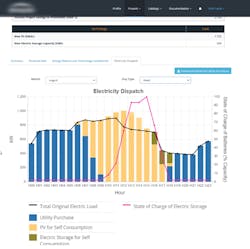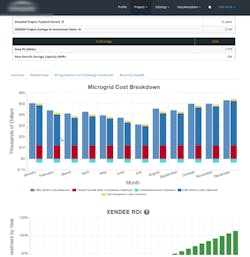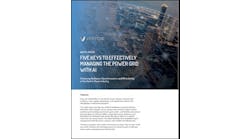Net-zero commitments and sustainability targets are dominating conversations in boardrooms across the U.S. In fact, Board Practice Quarterly found that ‘climate and other environmental and sustainability matters’ was one of the key priorities at the board level. And the initiatives are coming from more than just the corporate level.
While some may believe this corporate shift to sustainable responsibilities is long overdue, many Fortune 500 corporations are struggling to accurately identify and organize their data, deliver the required reports and illustrate their commitment to net-zero.
However, advanced enterprise software is emerging as a solution to lessen this analytical burden, as well as the time and money spent on the required reporting. At the same time, armed with this data corporations can not only see inefficiencies in their business but also identify best practices and new energy investments which may even save them money in the long term.
The solution to a net-zero problem
While net-zero commitments may soon become a requirement, they can be challenging and unwieldy to report. Meeting ESG targets requires expert resources and disparate data and applications. As a result, reporting on ESG can be a frustrating exercise open to errors, underreporting or manipulation.
A recent report from the World Economic Forum warned: “Multiple accounting standards and varied implementations of net-zero accounting create room for manipulation…The verification of reported reductions and the execution of offset pledges represent an increasingly complex challenge.”
The solution to this challenge is complex distributed energy software that can absorb all the metrics around a corporation’s annual energy consumption while also taking into account the price of fuel and the efficiency of onsite distributed energy resources. This can create not only an accurate picture of emissions data as it stands, but also generates a sandbox for exploring other investment opportunities that may offset or at least reduce emissions.
For organizations with a global presence, fleets of buildings, and numerous facilities, it can also be hard to know where to start. With the right enterprise software and the right data, the process can be fast and seamless. This starts with an initial site study of each location and then a comparison of key data that identifies the biggest emitters and allows your team to focus on those.
As a case in point, Xendee is working with a large manufacturer with a large number of sites across North America. To commit to net-zero compliance by 2035, they needed quality insights into their potential for carbon reduction and a plan for making reductions. To start this process, Xendee ran a site feasibility study for three of their locations with our design interface to assess the opportunity for cutting emissions based on energy demand, local fuel and energy prices.
How to meet targets
Software can save precious time by giving organizations the ability to make the right investments quickly through a one-stop reporting dashboard and by ingesting tens of thousands of sites at scale. By analyzing these sites programmatically, companies can also avoid having to embark on an in-depth, lengthy, and costly site study with an engineer.
You should look for a software provider that allows companies to filter results based on their goals. For example, a site might have sky-high electricity prices from the utility during the day which creates a massive opportunity for cost reductions and CO2 savings through solar panels. Alternatively, a site may get peak usage in the middle of the night making a generator a huge asset for cutting costs and adding resilience, but not making a big impact on emissions.
The software should then be able to filter project metrics (like OPEX, CAPEX, Payback Period and CO2 Savings) to help decision makers select projects objectively.
The next critical component of distributed energy software is that it provide a technical/financial report with every feasibility study. This report should break down the energy metrics for each site and give data on existing usage that can be used for either reporting current emissions or as a jumping off point for a new distributed energy project.
Looking to the future
Net-zero targets aren’t going away, and nor should they. We will likely need more corporate commitment if we are to stand a chance at turning back the worst effects of climate change. Therefore, having access to accurate, high-quality emissions data should become the norm for companies. It helps to meet government mandates, rewards operational efficiency, and saves significantly on recurring costs for ESG reporting that may soon become the law.
Sustainability should be integral to an organization’s long-term decision-making. And with the right software and the right data it is possible to do what is imperative for the planet and, effectively, good for business.
Adib Nasle is founder and CEO of Xendee.










